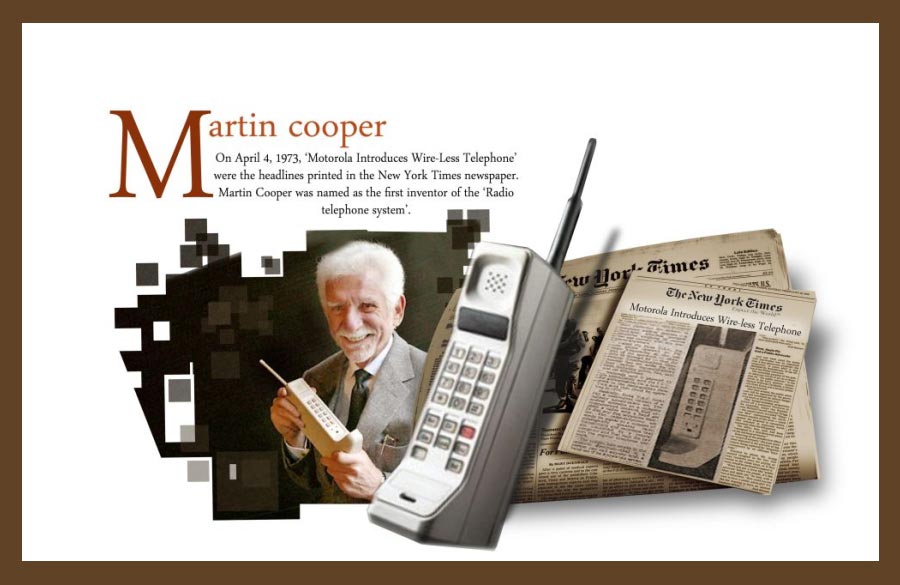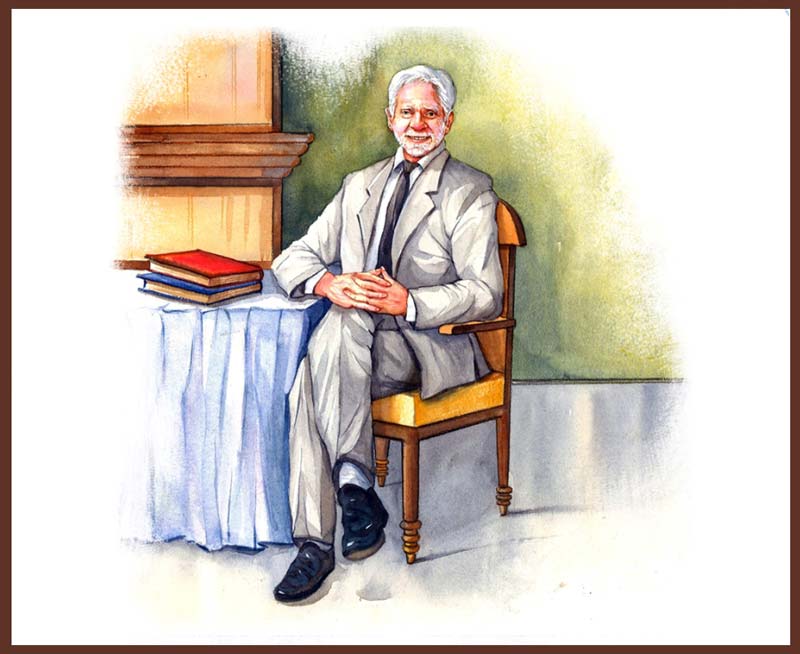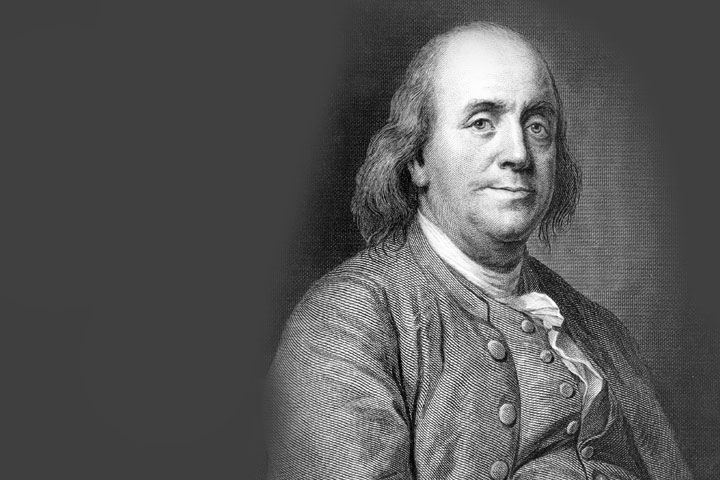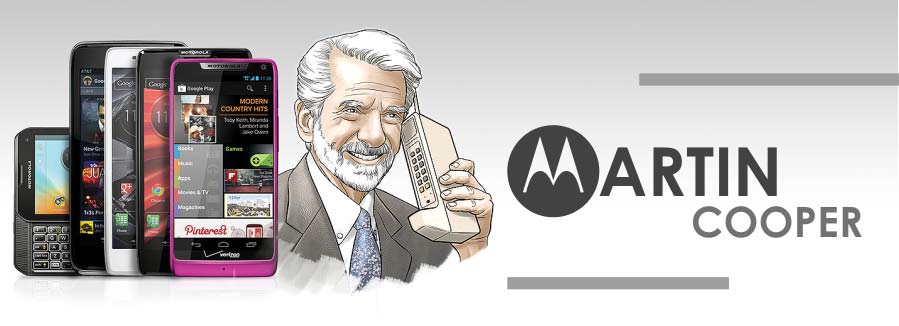
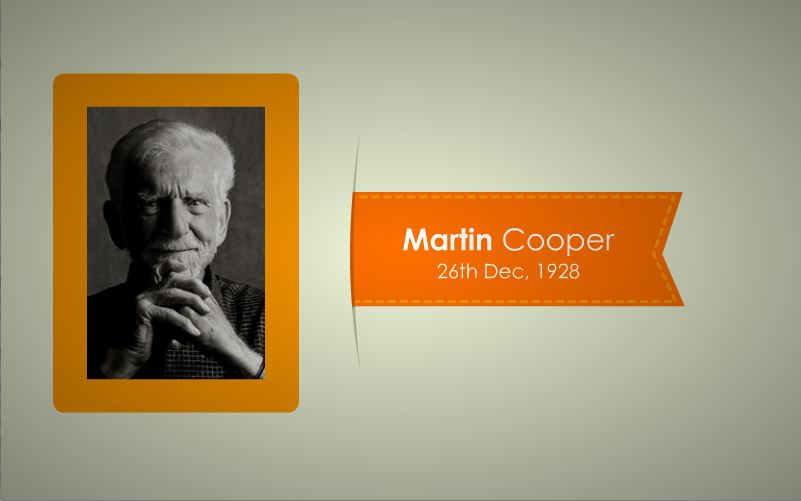
Introduction
Surely you have said this! In fact, how many times would you have said it? Have you tried doing that with a telephone? A phone connected to a solid copper wire. Do you have a landline at home? Wouldn’t it look ridiculous to have a tangible tail of wire following you everywhere you go? What a mess it would be if everyone had this copper tail. Either no one would go around with it or a chaos of wires would havoc the streets. Its sheer madness! But wait, why am I talking about this?
I can hear 20th century yelling “MO….B...I……L….E………….. P…H….O…N….EEEEE!!!!!”
Yes, I have heard of mobile phones. I have one myself. Kids in sixth-seventh grade are using cell phones these days. Well it’s not a big deal, but way back in 1970s… it was! Till then, no one knew what mobile phones were, as there weren’t any. The only way you could talk on a phone was through a landline or a car radio. Heck! Even the landlines were wired, not cordless. You probably wouldn’t even know what ‘car radios’ are... it’s one of those things that were out dated by cell phones.
Due to cell phones a lot of things have changed over the years. So many lives are saved daily as help is just a call away. Many crimes are stopped and even avoided by simply a concern call. Because of mobile phones we can be rest assured if our loved ones are safe, even if they are miles away. We can instantly change our plans and notify those concerned. We can navigate our friends in need. Calls to foreign locations are made easily. We can call who we want to, when we want to! It goes on.
To think of a world without cell phones is now difficult. Today, people throughout the world use cell phones daily. In fact, we use cell phones countless number of times every day. It is so much a part of us now, that if for some reason we don’t have it, the day feels odd. The fear of being disconnected haunts us all… personally, I feel handicapped. Life has become so simple since we started using cell phones.
And the credit goes to one man – MARTIN COOPER … a man whose belief and dedication led to the invention of cell phones… a landmark in communications that changed the world in every aspect. An invention made for masses, which left its impression at the very individual level.

MEET MARTIN

Martin Cooper, the reason each one of us has our own private personal phone number. Cooper freed us from copper wires and gave us unbound freedom of communication. Martin Cooper was the first born of Mary Cooper and Arthur Cooper, born on 26th December, 1928, during the Great Depression in Chicago, Illinois, U.S.A. Arthur and Mary had emigrated to U.S.A. from Ukraine, Russia (former). They made modest living, selling merchandise door-to-door, on instalment plans. The Cooper Family had a culture where education was of much importance. This was also one of the main foundations of Martin’s life. Martin who inherited his mother’s everlasting enormous energy, later said “My dad was a very thoughtful guy and whatever I am, I credit really good genes, and good culture.” Martin had a brother, Will Cooper, who was three years younger to him.During his early years, Martin lived in Winnipeg, Canada along with his family. He was an inquisitive soul since his childhood days. He constantly tried to figure out how things worked. By the time Martin was around four, he had started pulling things apart out of curiosity. One day Martin found a bunch of boys playing with a magnifying glass. As Martin got a clear view, he saw that they were burning a piece of paper by focusing sun rays onto the paper through the magnifying glass. Martin was astonished at the sight of it. He just had to know how that happened. Martin did not have a magnifying glass and the boys were way elder to him to entertain his curiosity. However, this wasn’t to stop him from knowing. So, he took a ‘soda-pop’ bottle and broke it to make his own magnifying glass. This was one of the many instances when Martin satisfied his curiosity in an unconventional way. Instead of stopping him from destroying things, Mary and Arthur too patiently let Martin satisfy his urge.
Later, at an early age of 9, Martin conceived the idea to improve the trains travelling far north to down south. He had just learnt about friction, so he knew it was necessary to get rid of it. He thought, ‘Why don’t we support this train on magnets.’ By that time he already knew that when two magnets of same charge come closer, they force themselves apart. This was just part of it. He further analysed that as air created friction, he had to get rid of it too. So, the train would have to be in an air tight vacuum tunnel. Damn! I mean to think of such a complex idea at that age, totally beats me.

SEEDS OF KNOWLEDGE

Martin started his education from Lawson Elementary School in Chicago. He enjoyed studying. It gave him satisfaction as his hunger for knowledge was fulfilled. After that, Martin joined the Crane Technical High School in Chicago. Here he came across two teachers who became a great inspiration to him in life. First, Mr Kinney – a perfectionist, who taught home grooming and wood shop classes. Although he was demanding, Kenny was very kind beneath a tough veneer. He would push Martin to utilize his complete potential. Instead of retaliating against this pressure, Martin acknowledged it and pursued perfection. The second teacher was Miss Corrigan, Martin’s English tutor. As Martin was immensely interested in gaining knowledge, books became his obsession. Miss Corrigan was always supportive of Martin’s endeavours. She used to encourage and appreciate Martin’s voracious reading.
Martin went on to pursue his further studies at Illinois Institute of Technology, Chicago. He decided to become a physicist, and almost became one. But the subject Chemistry made him change his mind. He realized, that to be a physicist, one had to opt for Chemistry compulsorily. When Martin attended his first chemistry practical, he could relate it to cooking. This does not surprise me as chemistry is all about getting the combinations and experiments right! I mean, have you been to a chemistry lab? It stinks! Try and imagine smelling rotten eggs with jasmine in a pool of mixed perfumes. A chemistry lab is a hub for such odd odours. At least that’s what I think, maybe Martin would agree with me. Now, since childhood Martin had avoided learning how to cook and was least interested in it. He probably saw the beakers as vessels and burners as stove. Hence obviously, Martin was a total disaster in the chemistry lab. He realized it was impossible to be a physicist unless he got better at chemistry. Martin reconsidered his choice. He switched from becoming a physicist to an engineer. Martin pursued Bachelor of Science in Electrical Engineering (BSEE) with a math minor. To finance his education at the Illinois Institute of Technology, he joined the Reserve Officers’ Training Corps. He obtained the degree in 1950 and continued his studies for a post graduate degree from the same university.
During 1950’s, U.S.A was an active participant in the Korean conflict. The conflict was a war between North Korea that was occupied by communism and South Korea which was supported by capitalist countries. Martin served in the U.S. Navy Destroyer during the Korean War and destroyed railway tracks. He received a presidential unit citation medal from President Singhman Rhee of Korea for his services.
After that, Martin went to a submarine school in New London. He graduated 2nd in his class, and as a reward was posted on the ‘U.S.S. Tang sc.’, a submarine based in Hawaii, one of the most modern submarines of that time. During this time, he picked up scuba diving, one of his many athletic pastimes. I guess fighting a war wasn’t enough to exhaust his energy. He cherished his days of service, but over a period of time the feeling to settle down soon began to grow within him. So, Martin left the navy as a Submarine Officer after three and a half years of service. What a vivid experience for an engineer, don’t you think?

WORK WISE
After leaving the navy, Martin joined Bell system, a division of American Telephone & Telegraph (AT&T). Unlike today, AT&T was the only giant in the field of communication in U.S.A. The Bell Laboratories of AT&T had conceived the cellular telephony concept in 1946 and enjoyed a monopoly in the field of radio communication. AT&T followed strict procedures and had a very orderly progression. Martin found himself uncomfortable with the Bell system’s culture. He would start at 9a.m. sitting in room along with hundred and fifty other engineers. As a bell rang at 5p.m., he had to leave along with all the others. This orderly progression did not appeal to Martin. During his time at Bell system, Martin once noticed an event that filled him with abhorrence towards the company. He saw a new superintendent come in and because he was a level lower than the guy who had previously occupied the office, the head had the carpet removed. Martin felt it was unnecessary & vulgar to display the employee’s social status in such a manner.
So, Martin left Bell system and joined the Teletype Corporation, a subsidiary of Western Electric. After his first three months of working on teletypewriter machines, Martin took apart ‘model 28’ teletype machines and put them back together again. Martin realized that he always had a few leftover parts and still the machines would work just as well. It still did not click to him that he had the potential to improve and innovate.
A Teletype machine is a character printer connected to a telegraph that operates like a typewriter.

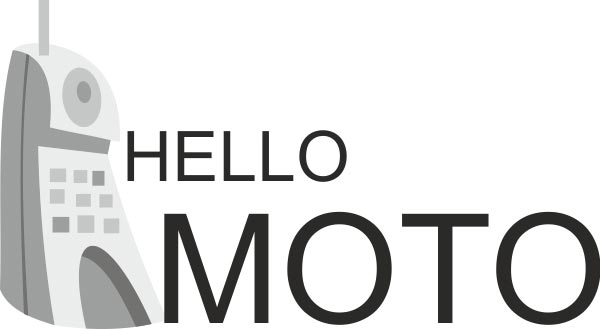
HELLO MOTO
While working at Teletype Corp, Martin got an offer from Motorola. He joined ‘Motorola Inc.’, of Schaumburg, Illinois, in 1954. At that time, Motorola dealt in Radio-related products. It was a small company compared to AT&T’s Bell Systems and had a completely different work environment. Unlike AT&T’s formal and highly disciplined structure, Motorola had a more casual and flexible environment. Martin found this to his liking & often found himself discussing technical ideas and related issues well past his working hours. And guess what! Martin used to study alongside. He would attend classes and would study during the night for his master’s degree. But this did not hinder his devotion to his work. Within two years, Martin was awarded his first patent for a selective signalling device. He achieved his M.S. degree in 1957. The following year, Martin got a patent for the first automatic push-button radio telephone for rural U.S.A.
In 1960, Martin was instrumental in changing the CMOS sheets that were previously limited to the information technology. He saw the potential for it to become a more widespread ‘inter-city’ link.
NOTE : Complementary Metal–Oxide–Semiconductor (CMOS) is a technology for constructing integrated circuits. CMOS technology is used in microprocessors, microcontrollers, static RAM, and other digital logic circuits. CMOS technology is also used for several analogue circuits such as image sensors (CMOS sensor), data converters, and highly integrated transceivers for many types of communication.
Martin also helped to fix the defects in the crystal which Motorola made for radio. This prompted the company to mass-produce the first quartz crystals. He also received a patent for introducing radio-controlled traffic light system.
In 1963, the IEEE Vehicular Technology Society chose Martin as their president and he was granted the Centennial Medal. The guy was brilliant and had colossal energy. This was when Martin’s boss, John F. Mitchell noticed him. John was quick to learn that Martin was gifted and had great potential in overcoming hurdles. He assigned Martin to the division that was working on the first portable hand-held police radios, which were introduced in Chicago in 1967. Later, Martin also played a major role in the establishment of the high-capacity paging market. He introduced the Pageboy II, the first of its kind, high-capacity, nationwide radio. He was also a part of the team that made supporting terminals for city wide high-capacity paging. During this time, he met Homer Harris in Los Angeles. Homer had his own family business in the paging industry and became one of Motorola’s customers for their hundred thousand pager terminal. John grew confident with his observations about Martin. He was promoted and made a Division Manager.
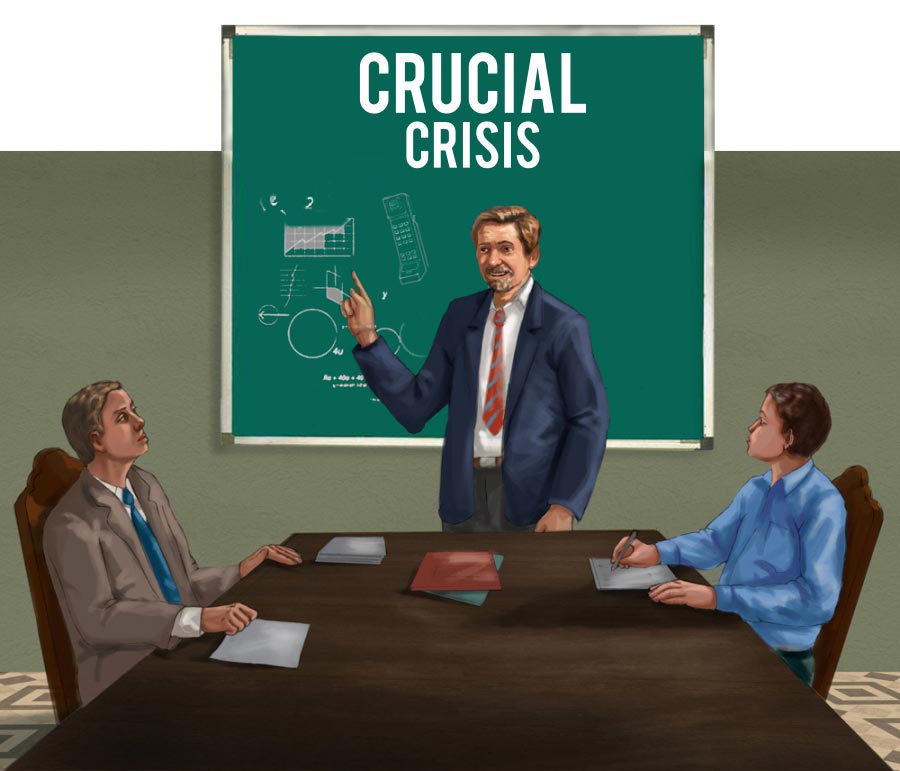
CRUCIAL CRISIS
At AT&T, an important technological breakthrough came with an idea that would change the way people would communicate. The idea was that the phone’s signal could be carried over a geographical area, passing from transmitter to transmitter in individual ‘cells’ of territory. In December 1971, AT&T made a proposal to FCC (Federal Communications Commission) that threatened Motorola’s existence. The FCC is a government body that regulates interstate and international communications by radio, television, wire, satellite and cable. AT&T proposed to provide air to ground services, a public switch telephone service, in other words a private ‘land-mobile’. For this, they asked for thirty megahertz of spectrum. Since each city only had thirty channels, it meant a monopoly.
Martin understood that if FCC granted this proposal, AT&T would either control them or put them out of business. What Martin found unacceptable was that AT&T’s vision of cellular telephony was, ‘Car phones’. Car phones were phones that were attached to the car’s dash board. Their model required immense charge, which was provided by the car battery, hence bounding it and the user to the car. Moreover, it’s estimated cost was between $3000 to $5000.
Motorola had learnt from their land-mobile business experiences that people are fundamentally mobile. Martin remembered what the superintendent of police in Chicago once told him when he was working on Two-way car radios, “I have a real problem. My officers have to constantly be in communications, the only way they can talk is to be in their cars and yet the people they were protecting were walking on the streets. How can I have my officers connected and still in mingling with the people.” And Martin discovered that this was also true for people working in managing airports, businesses and real estate people. He became aware of the fact that real communication was portable communication. People did not want to be chained to the walls, or stuck in their cars or homes; they liked to move around.
Martin voiced his opinion at Motorola. He said, “People want to talk to other people – not a house, or an office, or a car. Given a choice, people will demand the freedom to communicate wherever they are, unfettered by the infamous copper wire.” His belief was that cellular telephony had a better concluding product than ‘car phones’. His strong protesting views about monopoly drove him to muse and find a way to defeat AT&T’s reverie.
AT&T also claimed that they were the only company in the world who had the technical capability and financial resources to do this. Martin believed that competition was necessary for excelling development. He found AT&T’s proposal abhorrent in ethics and against public interest. He suggested, that they at Motorola, had the capability of creating such a technology and it really could be done, that it was practical. But that wasn’t enough, since AT&T had an edge over Motorola in terms of staff strength and resources. Even if Motorola managed to deliver the same product, AT&T could easily outrun their competition by cheaper pricing. So, taking it a step further, Martin claimed that they could create something better, something that could beat AT&T’s proposal without difficulty. Martin speculated that they could create a wireless hand-held cell phone.
The first step was to stall FCC from granting AT&T’s proposal. So, Motorola’s legal team began working on a proposal to the FCC to win approval. The proposal was to allow private companies like itself to operate network communications over radio frequencies. This was a necessary step in entering the mobile phone service market and preventing AT&T’s continued monopoly. Motorola also needed to show the government agency that a working mobile phone was indeed feasible from a practical standpoint, despite AT&T’s claims that car-based units were the future of communications.
It’s such a horror to even think of it. What about people who could not afford a car. O_o …
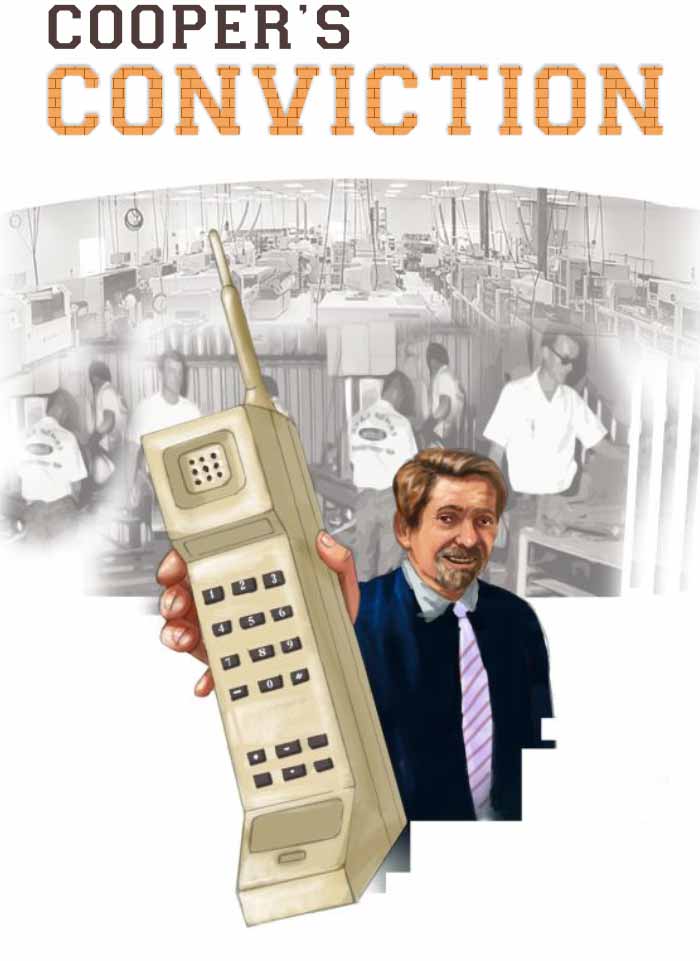
COOPERS CONVICTION
In November of 1972, after convincing his boss, Martin pursued to transform his idea into an invention. His zeal hypnotized those around him and made them his followers. They virtually had to shut down all engineering in the company and have everyone working on the phone and the infrastructure. Motorola had already been working on integrating, and a lot of departments were working on things that would miniaturize the portable experience. Motorola had its own division of semiconductors, a substance that could conduct electricity under some favourable conditions, making it a good medium for the control of electrical current. This played a major factor in Martin’s team’s success. They successfully created a prototype cell phone in just 90 days. What it lacked was a body shell. For this, Martin sponsored a contest in Motorola. It even included departments that were not under his control. The contest was to create a design for the body of the cell phone. He picked five participants and the deadline was set to December, giving the participants a couple of months to build it. At the end of the contest, Martin chose the phone which though unattractive, was the simplest to use. He believed that simple functioning made a product easy to use and hence, popular. Motorola staffers dubbed “the shoe phone” for its design made by Rudy Krolopp (an engineer in Motorola). The initial design was just a couple of inches long, but when the engineers started assembling all the parts, the size grew thrice as big.
The prototype cell phone was named Motorola DYNA T.A.C. (Dynamic Adaptive Total Area Coverage). It weighed 2.5 pounds and was 9 inches long, 5 inches deep and 1.75 inches wide. It was hefty and had a ‘rubber duck’ antenna. It offered a talk time of just 25 minutes on every recharge. The recharge time was ten hours. The phone performed basic functions i.e. dialling, talking and listening.
“It turns out the weight was very useful because the battery only lasted twenty-five minutes, which is just about how long a strong person can hold a phone up to their ear”, later humoured Martin in an interview.
The cost Motorola had to bear for this prototype was enormous, but was worth it. Martin set up a base station in New York. After some initial testing in Washington for the FCC, Martin Cooper and Motorola took the phone technology to New York to show to the public. There, they literally did nothing but show the phone to anyone who was interested. Thinking about it now, wouldn’t those people have a tale to tell? May be that’s how Martin got the media interested.

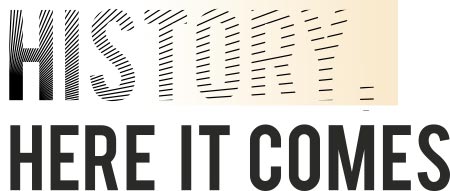
HISTORY HERE IT COMES

A press conference was arranged in New York to demonstrate the new invention. While going to the press conference, Martin was struck by an idea. He wanted their competitor and business rival, AT&T to feel the pinch. This was a huge victory in the war against monopoly. AT&T was one of the biggest companies in the world and the fact that a small company like Motorola had beaten them, had to burn. On 3rd April, 1973, while walking on a street near the Manhattan Hilton, 44 years old Martin picked up the DYNA Tac and pushed the ‘off hook’ button. He dialled the number to Bell Labs. The phone came alive as it connected him wirelessly to the DYNA T.A.C system that Motorola had set up on the roof of a building called Burlington Consolidated Tower. As he placed the two-and-a-half pound phone to his ear, the base station connected to the landline. His heart beats increased. There were little doubts in his mind although they had tested this invention multiple times, but when something is done for the first time ever, one can never be too sure. Amongst the few people around him was a journalist, so he did not have a second chance also. Martin heard the tone on the other end, it was ringing!
His heartbeat raced as he waited in anticipation. A big smile appeared on Martin’s face as the call went through. Joel Engel was online. Joel Engel at that time was Bell Labs cellular program Divisional manager, an equivalent position to that of Martin’s. This was it!
“Hi” said Joel E.
In his characteristic, low-key Midwestern accent, Martin said, ‘Hi, Joel. This is Marty Cooper.”
Martin noticed people walking around him, stare with puzzled expression. It added to Martin’s joy.
“I’m calling you from a cell phone — but a real cell phone,” He paused. He wanted Joel to feel the sting in each and every word. “a personal, [pause again] hand-held cell phone.”
The silence on the other end of the line fed Martin’s delight. He even imagined Joel to be gritting his teeth in jealous anger. A grin decorated Martin’s face. Joel replied and they had a polite conversation for a few moments. Martin could identify from Joel’s tone that he was annoyed with the fact that Martin had beaten him. After hanging up, Martin had a spark in his eyes as he went on for the press conference. I’m sure he must have thrown a few fists in air with a ‘woohoo!’ These were times of celebration at Motorola.
Martin was now fully confident. He had the aura that entranced everyone. He allowed the journalists attending press conference to handle the phone themselves. They were given the chance to dial and make calls. The first reporter he gave the phone to, called her mother in Australia and she was astounded when her mother answered. She could not understand how this little phone could talk halfway across the earth. Umm… did she say little phone!??? 9 inches is ‘little’? Well relatively it was… at that time.
Later, after the journalists had tried and tested the phone, Martin explained that “Motorola DYNA T.A.C eliminates the phone cord. All information today goes on the wire, including dialling and hanging up the phone. Through the use of a few integrated circuits, chips, and devices, we are performing the functions of tens of thousands of parts in the normal phone system”. Martin also stated that the network would probably be ready for subscribers by 1976. He speculated that the monthly costs would be $60 to $100 a month.
One of the few questions asked was if the ‘cell phone’ would replace car phones and landline. The answer given was, “Absolutely not. The portable phone is designed for use ‘on the go,’ when one is away from office or home, where conventional telephones are not available.” We might find Martin’s answer to that a little untrue today.
On April 4, 1973, ‘Motorola Introduces Wire-Less Telephone’ were the headlines printed in the New York Times newspaper. Martin Cooper was named as the first inventor of the ‘Radio telephone system’.
Martin’s DYNA T.A.C appeared on the July 1973 cover of Popular Science magazine. The technological breakthrough helped Motorola achieve its goal of winning FCC’s permission for private companies to operate a wireless communications network over radio frequencies. So, Martin played a crucial role in U.S.A’s inclination towards capitalism, at least in the field of communications.
The patent for DYNA T.A.C was filed on Oct. 27, 1973, with the U.S. Patent Office. It was later issued as U.S. Patent 3.906.166. Others named on the patent along with Martin Cooper were engineers who worked with him at Motorola and his boss, John F. Mitchell.
But above all the achievements, Martin was glad that he had avoided a monopoly from taking control.

FOR THE PEOPLE
The battle wasn’t won yet. Martin and his team instantly began working on commercializing the cell phone. Initially, their vision was to give these phones to every policeman and public servants. But soon, they thought of everyone having it.

The number of issues they had to solve were countless though. Martin and his team were reported to work day and night until the issue was solved and they could move on. One of them was that when Martin and his team had assembled the prototype, they only had thirty channels to work on. So the prototype had the basic twelve channels and they had to incorporate a separate crystal to lock onto every channel. Later, the team realized that the number of channels had increased to 611. This was a problem which Martin had to solve as early as possible. Martin knew it was impossible to have so many crystals in a phone. So, he pushed the other department to create a thing called synthesizers. He had to work closely with the semiconductor department to increase the efficiency and reduce the weight of the phone before his team could launch it in the market. He kept pushing the departments to make a chip with low drain. This was a challenge as there were very few applications and they had to use basic ones like CMOS. Heck, even personal computers weren’t there at that time. With a lot of hard work and brainstorming, the semiconductor team ended up making an elementary processor. This solved one of the many issues which the team faced.
In 1977, Martin was rewarded by Motorola for his efforts and was made the Vice president. Authority comes with great responsibility. In January 1979, Martin was upset that he was asked to attend a meeting on a Saturday. So the guy was sane and not a workaholic! He had to go to the Quail Lodge in Carmel to speak to a common carrier group. He felt it was a great imposition. So Martin used his privilege and took the private corporate jet. He flew to Monterey and met his company’s representative. They took him to the casual meeting in a bar. There Martin met Homer Harris and his family, Deloris Harris, his wife, and Arlene their daughter. During their conversation, Martin learnt that Arlene had started working when she was just 12, about the same time he joined his first job. She used to operate telephone switchboards for their family’s business, Industrial Communications Systems Inc.
Martin and Arlene found each other interesting and kept in touch from there on. Despite the difference in their age, they enjoyed each other’s company. Martin would try to impress Arlene by showing off his Lear jet & other things. Nevertheless, Arlene wanted to impress him as well. So she would get her fancy new Cadillac El Dorado, when she drove to meet him. What they did not realize was that both were already head-over heels in love with each other. They continued meeting often and grew very close to each other. Martin became the corporate director for research and development during this time.
During these years, Martin noticed that a lot of people were questioning the success of this cell phone project. He ignored the comments made behind his back and stayed true and focused on his vision. Martin’s team was successful in integrating the phone further more. Before its official launch, the phone had gone through four additional models, each one getting smaller and more integrated. When the cell phone production started, Martin enjoyed the shame and dismay on the faces of these ‘Nay Sayers’. His team’s hard work and determination towards his vision had been fruitful.
After spending nearly $100 million in its development, the Motorola DYNA TAC phone received approval from the U.S. FCC on September 21, 1983. To demonstrate the phone’s functioning to potential retailers, Motorola had to send a team along with the phone. The team comprised of Martin himself and an engineer. Martin was to demonstrate the phone and the engineer was essential for maintaining the phone as it had about more than thousand parts. As Martin made trips demonstrating the phone, he realized the need for a proper billing system. With this in mind, Martin decided to leave Motorola and start his own company. He started a company with Arlene to provide billing systems for cellular operators. The company was called Cellular Business Systems and was situated in Southern California.
In 1984, Motorola made the first commercial phone, the DYNA Tac 8000x available for the people. It offered 30 minutes of talk time and 8 hours of standby. It also featured a LED display screen for dialling or recalling any one of thirty phone numbers it could store. The phone cost $3995, equivalent to more than $9000 today. And the monthly cost was $50.00 per month excluding the call rates of $0.40/minute during peak hours and $0.24/minute during non-peak hour. Motorola stated that the cost of both, the phone and the monthly bill would eventually decrease as the market demand rises.
Although, the phone was a breakthrough in communication, it wasn’t a widespread sensation amongst people, as not many could buy it at that time. A cell phone was a rare thing to find. Only the wealthy were able to afford it. But Martin and a few of his team members knew that it would soon catch up. Their knowledge of peoples’ understanding reassured them. Eventually, the users were very impressed by the concept of being always accessible with a portable phone. The word spread and people started opting for the cell phone. The demand grew so much that at a point, the waiting lists for the DynaTAC 8000X was in the thousands. Martin proved to be right yet again. The phone’s simple functioning made it easier for the users to adapt it. Rudy Krolopp’s design lasted for 15 years in market.
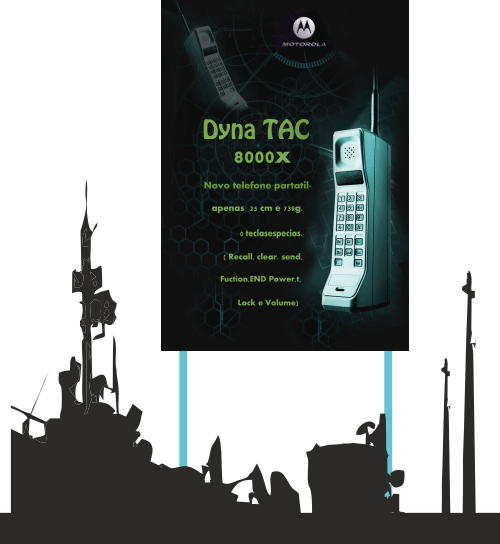

ENTREPRENEUR
In the shadow of his invention, Martin’s new company CBSI worked off well. This venture tapped the potential entrepreneur within him. In 1986, he sold this company to Cincinnati Bell for $23 million after attaining 70% market share in the nascent cellular phone industry. By this time, Martin had enough wealth to sustain his lavish, high-tech lifestyle. But he was still restless about his work. Martin and Arlene started another company called DYNA LLC.
DYNA was formed to provide a launching pad for Martin and Arlene’s work in wireless technology. It provided business-to-business and business-to-consumer products and services. They used DYNA as their platform and started other companies like ‘Subscriber Computing Inc.’, ‘Cellular pay phone Inc.’ and ‘SOS wireless’. DYNA served as a good platform to incubate and spin out new ideas.
Long time business associates, Martin and Arlene had been together for over 11 years now and had grown incredibly close to each other. They finally decided to give their relation a name and got married in 1991. Martin’s bubbling nature made up for the two decade gap between their births. The two of them together looked great. One could hardly tell that Martin was about 20 years elder to her.
A few years later, Martin got a call from Richard Roy who was a researcher at Stanford University. He had an idea to make mobile telecoms more efficient by using ‘Smart antennas’. A smart antenna is a digital wireless communications antenna system that takes advantage of diversity effect at the transmitter, the receiver, or both. In simple words, it sends the transmission in a particular direction where the ‘receiver’ is positioned, instead of broadcasting it in every direction. Richard Roy approached Martin and asked for his help. Martin agreed to spend perhaps a day or two on it in a month. But within a few months Martin realized how important this new technology was to the future of personal communication. He saw it as a medium to increase efficiency and optimally use the spectrum. Martin started thinking more about the possibilities for the same. He thought of it almost the whole time. So, in 1992, alongwith Richard Roy and Arlene, Martin formed ‘ArrayComm’.
NOTE : ArrayComm is a subsidiary of Ygomi LLC. Since 1969, the Ygomi companies have created innovative information technology solutions that have helped define new industries, i.e. to commercialize advanced MAS baseband technology that maximizes spectral efficiency. It is still active.
Under Martin’s leadership, the company grew from a seed-funded start-up in San Jose, California to specializing in the creation of more efficient cellular communication. With the headquarters in Buffalo Grove, Illinois, the ArrayComm team comprised of forty software engineers in the U.S., China, Israel and Japan.
In 1995, Martin received the Wharton Infosys Business Transformation Award for his technological innovations in the communication field. He also received the Fred link Award from The Radio Club of America.

COOPER LAW
It was while leading this company that Martin realized a pattern. In 1997, he coined his observation as the ‘Cooper’s Law’. This law states that every thirty months, the amount of information that can be transmitted over a given amount of radio spectrum, doubles. Martin also stated that this law has held true since 1897 when Marconi first patented the wireless telegraph, and will continue to do so in the future as well.


RETIREMENT: WHAT’S THAT?
In 2004, Martin was awarded honorary Doctorate in the field of wireless communications by the same institute he had graduated from, IIT. His achievements only served as a driving force for him.
In the following years, Martin received multiple awards for his past and recent achievements in the wireless technology. Many also refer him as the ‘father of cell phones’, although it is not much to his liking. “Makes me feel old”, is what he says. Martin has a big fan following in the field of technology. Students, professors and even certain businessmen seek and follow his vision. After receiving so much recognition and following, it is but natural for anyone to have pride and sometimes even ego. It is seen that fame turns even the most humble and polite people into arrogant snooty jerks. Fortunately, this cannot be said in the case of Martin Cooper. Even after reaching the pinnacle of success and making an enormous contribution to the world, Martin continues to remain down to earth. His intentions are not clouded by monetary achievements or hunger for fame and recognition. This may be one of the reasons why most of the world is unaware of his existence, and he too doesn’t seem to be bothered about it. His true vision is to improve the life of every human on this earth. Martin spends his time in ways to achieve this. He believes, the wireless technology is only in its infancy, that the potential it holds is not yet fully realized. He believes that the coming generations would have much more to offer than integrating existing features in a cell phone.
Martin also answers questions asked by students in his free time and encourages them to think innovativly. He comments that if studying is made fun, a lot of kids would grow up brilliantly. I agree!
Comparing studies to games, in a Science & Technology magazine he stated, “If you don’t like a game you’ll get up and do something else. But if you enjoy playing it, time cannot bind you.”
“Good technology is intuitive, is transparent, is invisible” notes Martin Cooper. “What companies are doing now is, they are making everyone an engineer. The phones these days come with an instruction manual that’s heavier than the phone! That just doesn’t make sense…” remarks Martin. LOL... to an extent I would agree. My phone has ninety-eight applications and out of which thirteen are almost similar and many are not even really required. Sending a file has to happen through an app and not simple options we had previously. Personally, I feel it’s easier if we can choose our phone’s features and configurations, you know, like computers and laptops. They come with the basics and you install what is actually required.
In 2006, Martin helped his wife Arlene in the foundation of Greatcall’s famous Jitterbug, the simplest phone in modern times. It is made to give its users an experience of calling through the operator’s domain. The phone asks questions to which the user has to simply choose ‘yes’ or ‘no’. To place a call, the user is connected to a 24×7 hotline, where personnel are available who act as an operator. So, the user has to mention the name or number he/she desires to call and the rest is done by the operator. The operators even personalize the phone for the user and make the desired changes on request. I must get my grandparents one of these.
Martin has given many interviews to multiple newspapers, magazines and websites. On one of them Martin commented, “People keep asking me which cell phone to buy. Now, you cannot understand things theoretically, you have to immerse yourself into a product, into a system and use it in order to really understand it and that’s why I have a new cell phone every month.”
At the age of 85, most people find getting out of bed their most tedious task of the day. They use sticks for their support and find it difficult to see without glasses. So does Martin, the only difference is, the sticks he holds help him steer while skiing down the snow mountains and the glasses he wears help him keep the water out of his eyes while swimming. Perfectly fit and fine, Martin also sports Kayaking and lawn tennis with his wife Arlene. She admits that even though she is more than 20 years younger to him, she finds it difficult to keep up with his fast pace. For a person who has led such an exciting and active life, this only adds to my amazement. I really want to know Martin’s secret for being this healthy and active. Martin also expresses that we must focus on inventing new technology instead of modifying what is presently available. He envisions that wireless technology can help save lives and even improve them.
He dreams, “The health care industry is going to be revolutionized because you will have sensors at various points of your body, measuring different things and a computer somewhere or may be a doctor will be examining you all the time.”
But is it really required, Dr Martin? We do have annual medical examinations.
“This concept of annual physical examination is almost worthless”.
WHAT! What’s he trying to say! How is it worthless!?
“Because looking at a body at a point and time doesn’t really tell doctors very much at all. But if you could measure these things all the time, you can predict heart failures, predict diabetes and you can prevent all these things.” Hmm…maybe he has a point. There are companies actually working on making such devices for wireless health monitoring.
From health to market competition, Martin has views and dreams about almost everything that relates to mobility products. A book called ‘Everyone is Wrong’ is also published where Martin has answered the most frequently asked questions. In the book, Martin shares his visions and talks about how he predicts or rather wishes the world of communication to evolve. He believes, there will come a day when phones would be fitted or even embedded under the skin behind one’s ear. They will have super intelligent computers integrated within and will follow voice commands for all the functions, just like talking to it. This reminds him of his days in Motorola, “We use to joke that you will be given a phone number at birth and the only time you wouldn’t pick up was when you are dead.”
Today, Martin remains socially active and serves on the technical advisory board to the FCC as well. He continues his efforts to contribute in the betterment of human lives. I hope he does because if it wasn’t for him, we’d be sitting in our cars making calls, and ‘WhatsApp’ and ‘BBM’ would be unheard phonetics.
“When I was young, the concept of being a dreamer was a very negative one. If you were a dreamer, you were useless. You didn’t contribute anything to society. But Star Trek made dreaming legitimate, and I think that was a huge, huge contribution.”
–MARTIN COOPER
Next Biography





